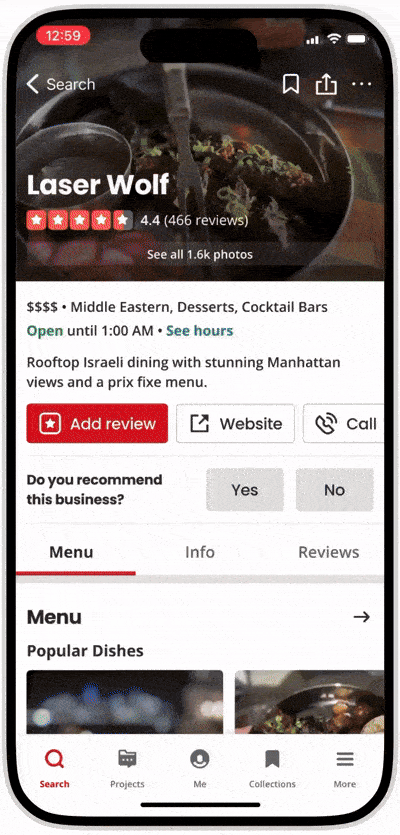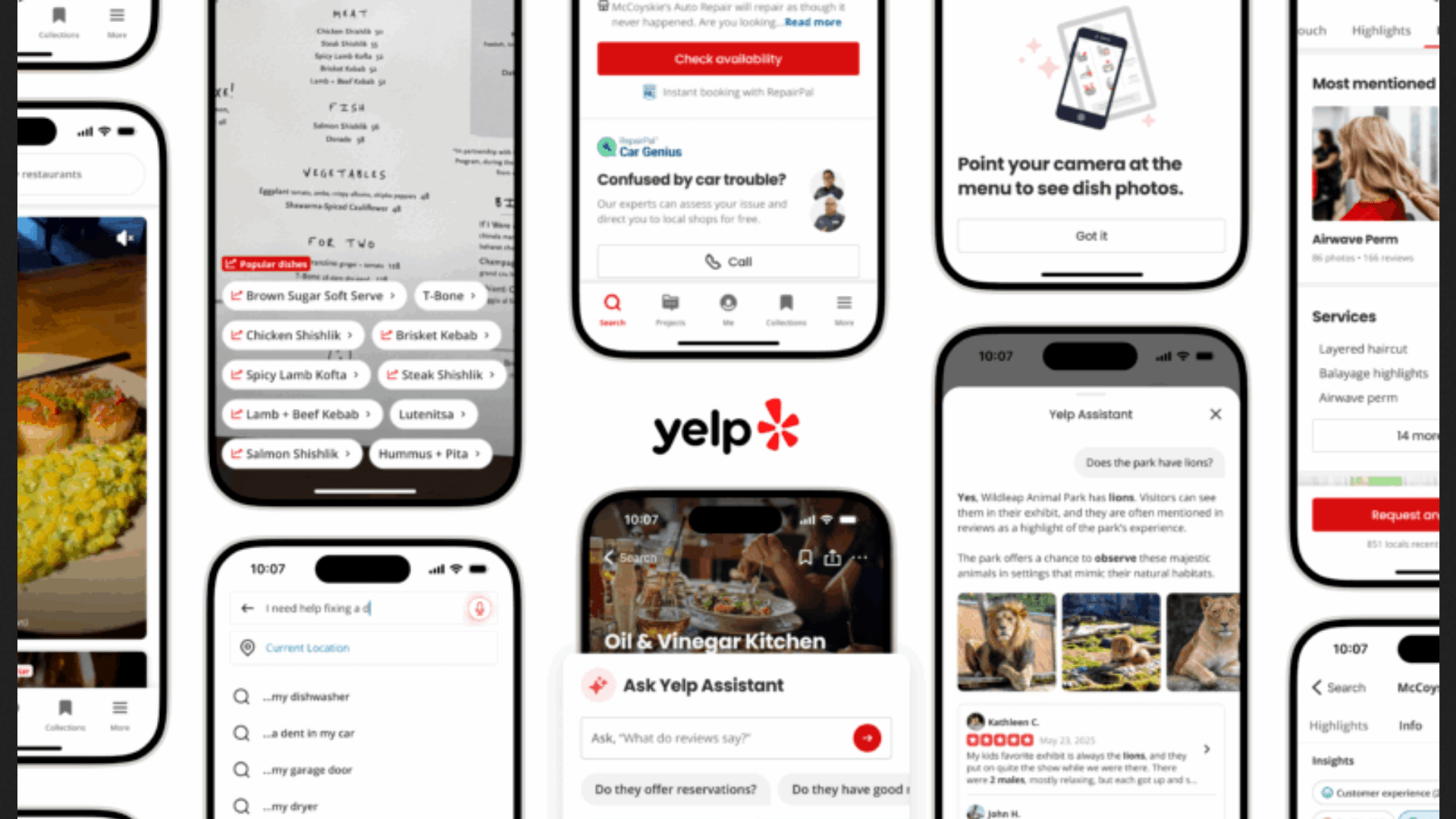- Yelp’s new AI assistant now answers detailed user questions
- The AI can interact via text or voice and use a new feature called Menu Vision
- Impact of greater AI on Yelp remains to be seen
The enhanced assistant is available on Yelp’s mobile apps. You can ask all your questions in your own words via SMS or perform a voice search. If you’re at a restaurant and want to know what the menu description means in real life, you can allow Yelp’s new Menu Vision feature to access your camera, and it will find photos of the food.
But while the move is newsworthy for what it adds to Yelp’s ecosystem, it’s just as interesting for what it could mean about how people use Yelp. After all, Yelp built its brand on opinions collected from the public. Deep dives into a sushi restaurant’s unique lighting system, brunch disasters, thoughtful and heartfelt praise for specific servers, and other messy, honest, wildly uneven stories were the focal point. You may have to sift through the noise to find a reliable signal, but noise adds depth and color to responses.
Wrapping this human sprawl in a streamlined AI would seem to remove all that flavor text. Yelp describes the AI’s polished, well-referenced responses not as an erasure of the human element, but simply as translations into more accessible forms.
Yelp’s AI doesn’t generate answers out of thin air. It relies on the mountain of data from its community: review texts, tagged photos, user preferences and business listings. This means it still depends on humans to power the machine. But if Assistant becomes the default interface, it’s easy to imagine users no longer feeling compelled to write their own epic consumer stories.
Human screams
This two-pronged AI deployment positions Yelp somewhere between Google Maps and a full-scale digital concierge. Menu Vision is a good example of change. You are out to eat. You point your phone at the menu. Like magic, AI overlays real food photos, prices, and review layouts for that specific dish without the need to search or scroll through traditional reviews.
You’re not reading someone’s complete impression of a meal, just a refined miniature of the collective feeling. But you can just as easily look at the star ratings or do a keyword search if that’s what you want.
Yelp’s AI upgrades appear to be based on the idea that most users would rather have a quick visual summary than wade through 47 conflicting reviews. And they might be right in most cases. If Yelp once felt like a searchable bazaar of user experience, the new version wants to feel like a direct line to someone who already knows what you want.

Yelp’s initiatives are part of a broader trend affecting consumer apps. Platforms once focused on human-produced content are repackaging them with AI built for speed. This is visible from forums like Stack Overflow to Amazon’s e-commerce hub, not to mention Google’s blitz to make AI ubiquitous in every one of its products. Yelp has a lot of data, which makes it more immediately useful (and more easily monetized).
For most users, this will be a good thing. You’ll spend less time looking at the stars and more time finding a really good spot. You’ll get faster recommendations, better booking flows and less guesswork
But it’s questionable whether the elements that make Yelp data valuable will still be there without the messy elements. Would so many people write helpful, if brutally scathing, reviews contributing to Assistant’s responses if no one saw beyond the AI to read them? Assistant responses cite their sources so you can revert to the original review if you wish, but how many will choose to do so?
But for die-hard fans who loved the full scroll and the chance of stumbling upon a brilliant, weird, overly long review, Yelp’s new AI layer may seem like a straight, boring road past a tantalizing wilderness. This may be the future of local business discovery, but you’ll have to hope that the food at the recommended restaurants isn’t as bland as the answer to your question.
Follow TechRadar on Google News And add us as your favorite source to get our news, reviews and expert opinions in your feeds. Make sure to click the Follow button!
And of course you can too follow TechRadar on TikTok for news, reviews, unboxings in video form and receive regular updates from us on WhatsApp Also.




